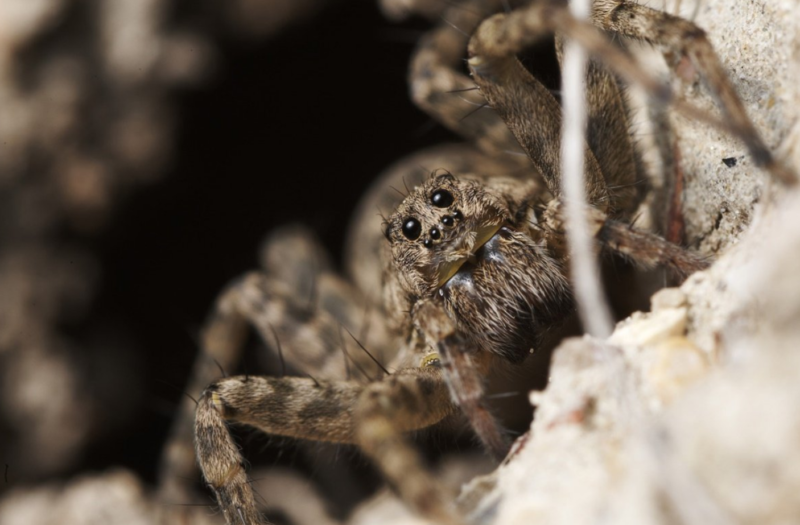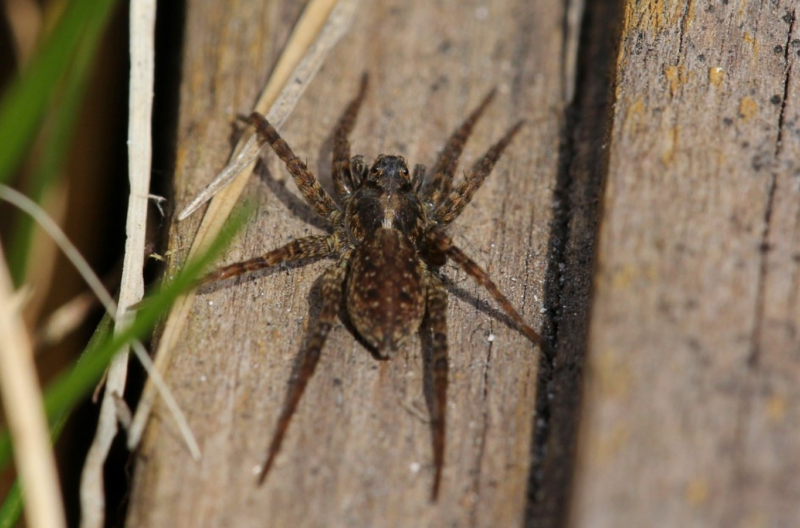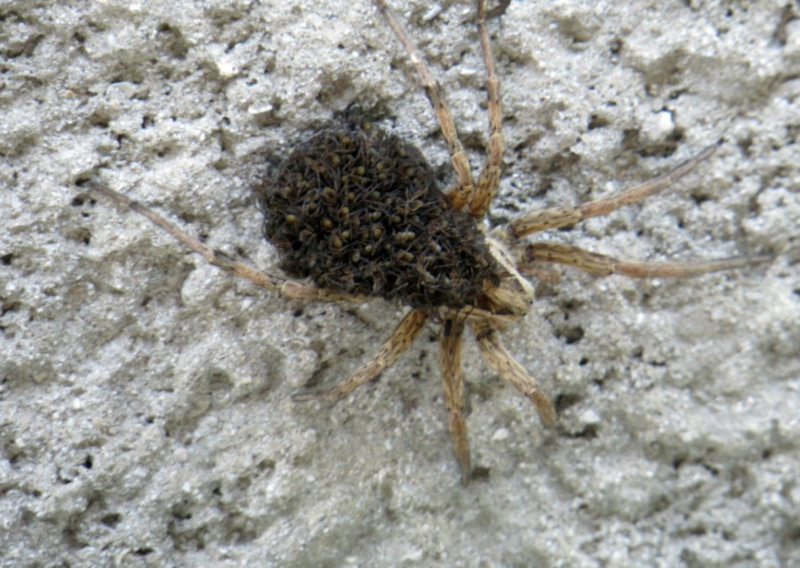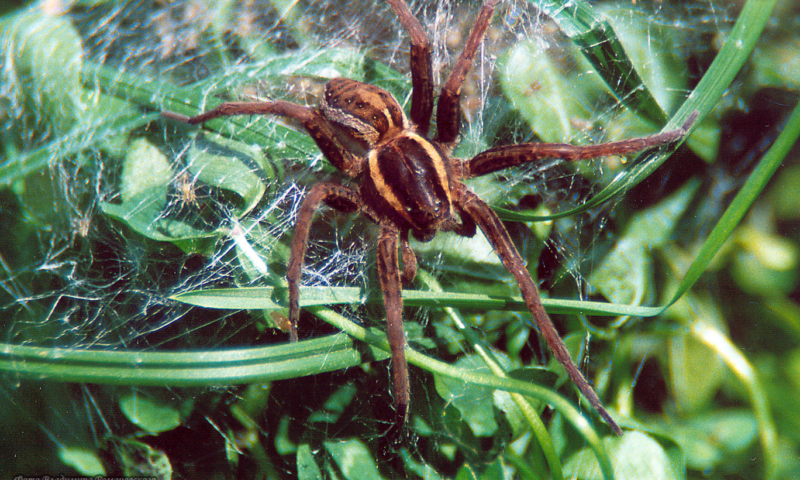The wolf spider is known for not weaving a web to lure prey to itself, but choosing the tactics of tracking and attacking the victim (the wolf also hunts in the wild). Hence the name of this arachnid family.
Material Content:
Description and characteristics of the wolf spider
The wolf spider is an araneomorphic type. As a rule, just such arthropods are found in temperate latitudes. Arachnids live for about a year.
Araneomorphic spiders are distinguished by their body structure. They have larger and more powerful claws with claws, which allows them to quickly move around the area and attack prey.
Finding a true description of a wolf spider is not easy. In nature, there are more than 2000 species, each of which has characteristic features.
But still, the specialists managed to deduce the general patterns in the description:
- Spiders have a dark color (ranging from gray to black). Shades depend on the climatic conditions in which they live. In some individuals, you can find a pattern on the back. The color of the wolf spiders allows them to disguise themselves well, posing as foliage or soil. This is especially valuable during the hunt.
- The size of adult individuals is 2.5-3 cm. Moreover, females are larger than males.
- The entire body of the arthropod is covered with hairs.
- The paws, of which 8 pieces are very powerful, are well developed, which helps to move quickly, it is easy to catch up with their prey. In addition, there are claws on the front (3 pieces), so it moves with ease along the mountainous terrain.
- The body is standard. Consists of abdomen and cephalothorax.
- Spiders have 8 eyes, which are arranged in three rows. The front ones are very small, the second row is large, the third is medium. Experts say that wolf spiders have excellent eyesight.They can see the prey at a distance of 30 cm. In this case, no one can distinguish the shape of the insect.
Wolf spiders have no blood. This function is performed by geolymph. The peculiarity is that it can change color. In the open air it becomes a blue tint.
Habitat
Wolf spiders can be found on all continents except Antarctica. There, the condition of the soil is not suitable for their existence.
Spiders live in meadows, in thickets, forests, rocky terrain. Favorite habitat - the area where there is an increased level of humidity. In the soil, they equip themselves with minks in which they store prey.
Nutrition and lifestyle
Wolf spiders do not live in families. Individuals of the male and female gender interact with each other only during mating. For this, the males dig a deep hole and braid it with cobwebs.
Wolf spiders are predators, they will never eat plants (even if they are very hungry). They can hunt both day and night (thanks to good vision).
The tactics of these arthropods during the hunt may vary:
- they catch up with the victim and attack him;
- tracked down for a long time;
- lure into his hole.
What does this species of spiders eat? As a rule, prey is small insects: aphids, cicadas, bugs, flies. Catching its victim, the spider injects poison into it, paralyzing the insect for several minutes.
It is impossible to destroy and exterminate wolf spiders. Not many people know that they play a huge role in the ecosystem, destroying crop pests.
Household Rules
Spider-wolves have a rather specific appearance, it is always interesting to observe their behavior. That is why many arachnologists dream of having this view at home.
Such arthropods are not poisonous, so you should not be afraid of them.
Maintenance and care are quite simple:
- Spiders are very large, so it’s better to buy an aquarium of 15-20 liters for them.
- Forest soil mixed with peat chips should be placed in the container. The layer must be at least 7 cm (maximum 12 cm).
- Pay special attention to the temperature regime, try to maintain it within 25-30 degrees. Spiders do not tolerate low temperatures.
- The humidity level should be 80%.
The presented individuals are rather voracious. Their daily diet must consist of their fresh insects: flies, crickets, mosquitoes, larvae. In addition, the aquarium is filled exclusively with drinking water (you need to change the fluid daily).
Remember, wolf spiders are predators, so you should not pick them up to avoid bites.
Propagation Features
Those specimens that live in a temperate climate mate only in the summer, tropical subspecies - year-round.
Having discovered an attractive female, the male performs a mating dance. He slightly raises the body, as if standing on his hind legs, begins to actively move the front. Then slowly goes to the female. If she is ready to mate, turns around and exposes the spider to her abdomen. In this situation, "girlfriend", he can easily climb onto her back.
At the end of the act, the female wolf spider digs a deep mink and begins to prepare a cocoon. Then he places the eggs there and additionally wraps them in a thick web.
After everything is ready, she throws the cocoon on her back and walks with it until the offspring appear. In order for the eggs to mature faster, the spider mother needs to spend more time in the sun. Many of them during this period lose up to 30% of their mass.
As soon as a tiny spider appears from the egg, the female opens the cocoon with her mouth, the offspring comes out.
With spiders on the back, the mother moves for several months. During this time, kids should learn how to get their own food. As a rule, after spiders leave the female’s abdomen, she dies. Only a few individuals manage to survive severe exhaustion.
Animal poison
The bite of a wolf spider is not fatal to humans. But it can cause an active allergic reaction.
The main symptoms are:
- swelling of tissues at the site of the bite;
- redness;
- severe itching;
- short pain.
In this case, you need to attach ice to the bite site and take any antihistamine. No additional serums are needed.
The most dangerous for humans is the poison of the tarantula. But even he does not lead to death.
The non-toxic spider is the first to never attack humans. When danger is detected, he turns on his back and pretends to be dead. In this state, it can stay for quite a while.
Interesting Facts
Arachnologists give interesting stories about wolf spiders:
- Sometimes there are so many eggs in the cocoon that they cover the entire surface of the spider. It was noted that some females can carry weight 4 times their weight.
- The nervous system of wolf spiders is very developed, which helps them to track and wait for prey for a long time.
- If a female loses a cocoon with eggs, she experiences extreme stress and for a long time tries to find it.
- In artificial conditions, scientists have not yet been able to create such a “cradle”. Not even an incubator helps. The cocoon begins to rot, the eggs die.
Spider-wolves are an unusually interesting species of arthropods. Some experts believe that they have signs of intelligence. In support of this version, their behavior is indicated by spiders carrying babies and hunting for prey.
Many arachnologists like to keep arthropods at home. Small individuals have an unusual exotic appearance, the body is completely covered with hairs. The spider is not poisonous. But in the tropics, you can find species of wolf spiders, after bites of which a person begins a strong fever.




















